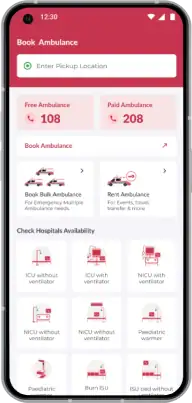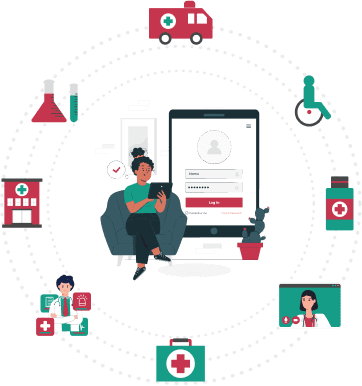The response time of ambulances is a critical factor in determining the effectiveness of emergency medical services. In India, a vast and diverse nation, the average response time varies across regions, impacting the quality of care provided during medical crises. Understanding this aspect is vital for individuals to make informed decisions during emergencies. Let's explore the average response time of ambulances in India and how MedCab is shaping the landscape of emergency medical services.
Understanding Average Response Time:
The average response time of an ambulance refers to the duration it takes for an ambulance to reach the location after a distress call is made. Swift response is essential in situations where every second counts, such as cardiac emergencies, accidents and critical medical conditions.
Factors Influencing Response Time:
Several factors contribute to the variation in response time:
Geographical Location: Urban areas generally have quicker response times due to better infrastructure and shorter distances. In contrast, rural regions might experience longer response times due to accessibility challenges.
Traffic Conditions: Amid congested traffic, ambulance arrival can be markedly delayed, especially in densely populated urban areas. Such delays underscore the need for streamlined emergency routes and public awareness to ensure swift medical assistance. This is one of the main factors influencing response time.
Emergency Call System: The speed of ambulance deployment relies heavily on the effectiveness of the emergency call system and dispatch procedures in place. An efficient system ensures swift response to distress calls, enhancing the chances of timely medical assistance during critical situations.
Availability of Ambulances: The availability of ambulances plays a pivotal role in response time. Adequate ambulance numbers within an area translate to quicker assistance during emergencies, ensuring timely medical intervention for those in need.
Road Quality: Ambulance mobility is hindered by inadequate road conditions, especially in rural locales. Poorly maintained roads pose a significant challenge, delaying critical medical assistance when time is of the essence.
Average Response Time Across India:
Ambulance response times across India vary greatly, reflecting the nation's diverse healthcare landscape. Urban areas benefit from efficient EMS infrastructure, often witnessing response times of mere minutes. However, the scenario changes drastically in remote regions where response times can exceed 30 minutes due to infrastructural challenges. This diversity underscores the need for comprehensive improvements in emergency medical services nationwide, addressing both urban and rural disparities. Efforts to enhance response times and ensure timely medical assistance are crucial for safeguarding lives across all corners of the country.
MedCab- New Era of Ambulance Services:
In the midst of this landscape, MedCab has emerged as a game-changer. With a mission to provide swift and reliable emergency medical services, MedCab has been working diligently to bridge the gap in response time across India. Through its efficient dispatch system and strategic placement of ambulances, MedCab aims to minimize response times to 5-10 minutes, ensuring that critical care reaches individuals in need promptly.
Booking Ambulance Service in Lucknow:
For residents of Lucknow, MedCab presents a solution that prioritizes timely care during emergencies. To book ambulance service in Lucknow, simply reach out to MedCab at your convenience. Whether it's accidents, cardiac incidents or any other medical emergencies, MedCab's dedicated team is prepared to provide immediate assistance.
Conclusion:
The average response time of ambulances in India reflects the complexity of the nation's healthcare infrastructure. Various factors contribute to the variation in response times across different regions, from urban centers to remote areas. While urban regions generally enjoy quicker responses due to better infrastructure and shorter distances, rural and remote areas may face challenges related to accessibility, traffic and infrastructure.
In this diverse landscape, the importance of efficient emergency medical services cannot be overstated. It is essential for healthcare providers, policymakers and communities to work together to improve infrastructure, increase the availability of ambulances and streamline emergency call systems.






